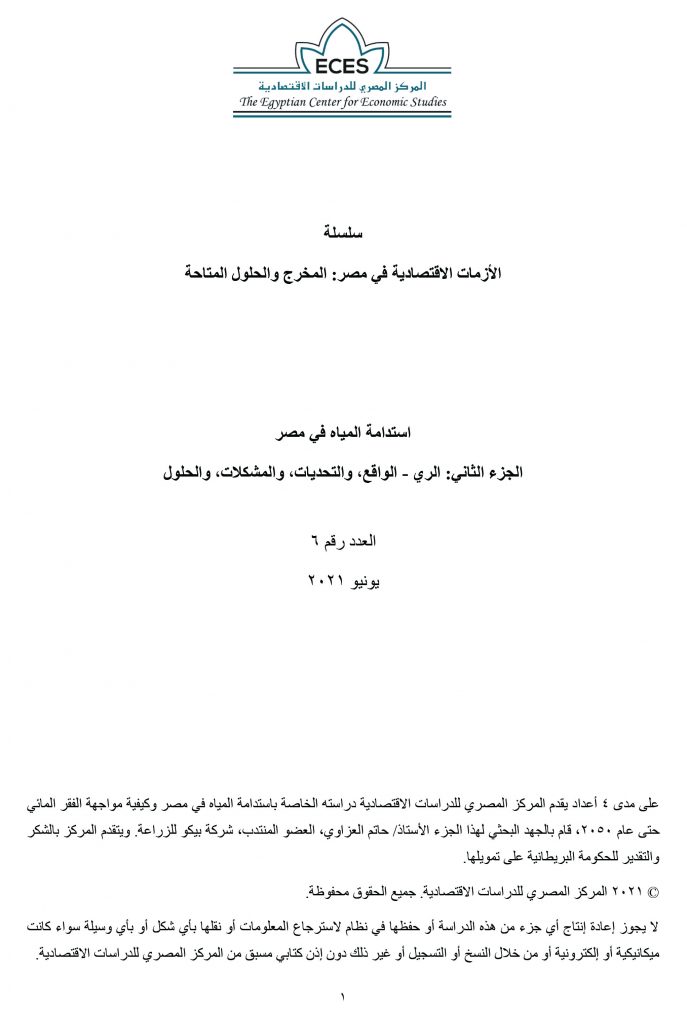Abstract:
This study discusses factors negatively affecting available water sources, particularly the Nile. Egypt’s annual share of the Nile fresh water amounts to 55.5 billion cubic meters (BCM), representing only 72 percent of water availability. The agriculture sector consumes 85 percent of this share due to flood irrigation, wasting about 50 percent of total irrigation water. The study found that lining irrigation canals, and applying modern irrigation systems (sprinkler + drip irrigation) and technology (soil sensors) will lead to a water saving of 21.7 BCM annually, savings in fertilizers ranging between 8 percent to 55 percent, and an increase by 1 percent to 50 percent in crop production, according to applications made by the Ministry of Agriculture and Land Reclamation (MALR), private companies and individuals. The study also proposes the introduction of new legislations to persuade farmers to transfer to modern irrigation methods out of conviction, understanding and sense of responsibility. It also suggests imposing sanctions on those who receive information, awareness, explanation and guidance, but do not apply by legislations. Furthermore, it sheds light on other important aspects that can save large amounts of water up to about 27 BCM annually, namely: rain and torrents, the Nile rose, rationing of drinking water consumption, and the use of solar panels to cover channels and irrigation canals transmitting water.

